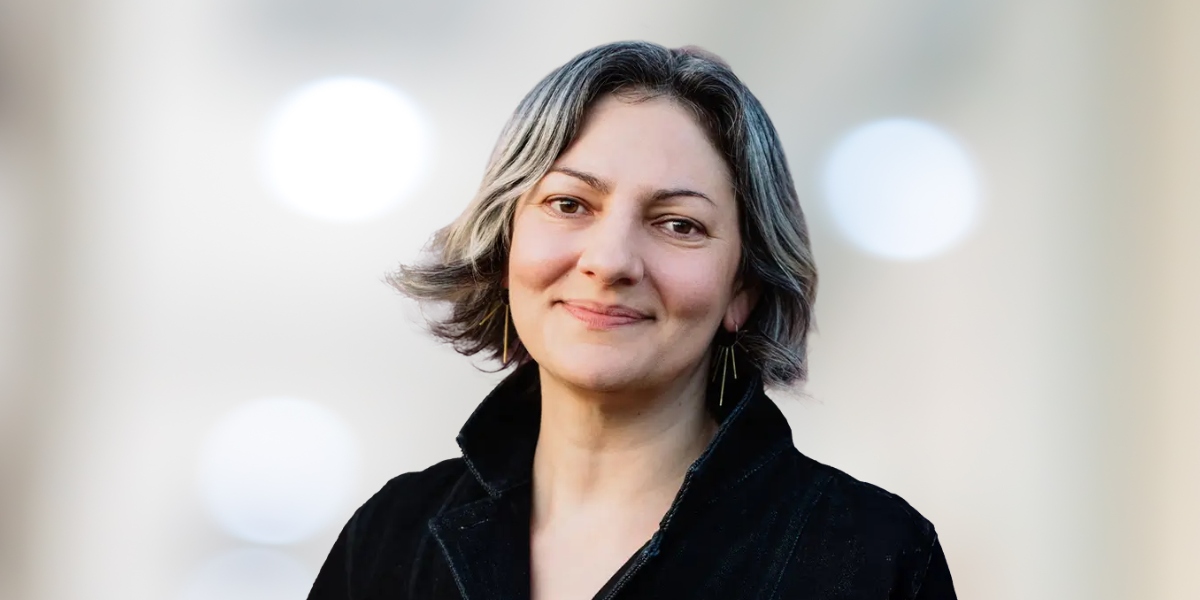How Sarah Stein Greenberg Uses Human-Centered Design to Future-Proof Teams

"Design is one of the most powerful ways to prepare yourself to be really good at learning new things quickly."
— Sarah Stein Greenberg, Executive Director, Stanford d.school
In a world of rapid AI evolution, fractured workforces, and shifting generational priorities, one thing is certain: the ability to creatively adapt will define tomorrow’s successful companies.
That’s why Sarah Stein Greenberg, Executive Director of Stanford’s famed d.school and author of Creative Acts for Curious People, believes design isn’t just a discipline — it’s a mindset that builds resilient, innovative, and human-centered teams. On Masters of Scale podcast, Greenberg shared how companies, leaders, and entrepreneurs can embrace design thinking to better navigate ambiguity, boost creativity, and build meaningful cultures, even remotely.
From Building Things to Making Change
Twenty years ago, students at Stanford’s d.school came to build things. Today, they show up to make change — the kind that impacts complex, messy systems like healthcare, climate, and education.
“Students really want to make change,” says Greenberg. “Their appetite for impact is bigger. And so are the challenges — broader in scope and scale”.
This generational shift requires new tools and new mindsets. Greenberg and her team responded by building curricula that emphasize not just designing products, but also designing systems, teams, and ethical decision-making.
What Is Human-Centered Design?
For Greenberg, human-centered design isn’t just about graphics or aesthetics. It’s about starting with people — their needs, contexts, and behaviors — and then building from there.
“Everything not found in nature has some kind of human influence in how it came to be,” she explains. “So we ask: how do you tune in to what human beings need and what’s happening around them?”
This approach becomes even more powerful in environments defined by uncertainty — something every startup founder or early-stage team can relate to.
Designing for Remote and Hybrid Teams
One of the most relevant design challenges today? Leading distributed teams.
Remote work stripped away casual collisions and body language cues. But Greenberg sees opportunity in creatively re-designing how connection happens.
One of her favorite exercises is called a “wordless conversation” — a day-long exchange of images between two teammates. Every hour, they send each other a photo, silently building a shared narrative.
“It’s a rich, empathy-building interaction that doesn’t require language,” says Greenberg. “And it helps restore a sense of human connection in a digital world”.
The result? More psychological safety, more creativity, and a stronger team foundation.
Prototypes, Play, and Productive Struggle
Greenberg stresses the importance of building to think. That means physically prototyping — even if your product is digital. Drawing, cutting, collaging — they all engage different parts of the brain and open up new creative pathways.
She also champions the concept of “productive struggle” — the idea that discomfort often correlates with deep learning. At the d.school, students visually map their learning and emotional journeys during projects. The moments where they learned the most often coincided with moments of emotional difficulty.
“If it comes too easily, it’s less likely to stick,” Greenberg says. “The goal isn’t to avoid struggle — it’s to make it meaningful”.
Design Thinking Makes Teams More Adaptable
This isn’t just feel-good theory. A recent study Greenberg cited found that design thinking outperformed traditional training, especially for teams facing high task variability — a fancy way of saying “a lot of change, all the time”.
Translation: If your team is constantly pivoting, launching, or rethinking — design thinking helps them thrive instead of flail.
A few key practices she recommends:
- Assumption storming: Identify and challenge the “truths” your team is operating under. What if they weren’t true? What would you build?
- Shadowing teammates: Build empathy not just for users, but for colleagues. Even via Zoom, shadowing someone’s workflow creates better cross-functional understanding.
- Learning journey maps: After a project, map your learning highs and emotional lows. Use this as a tool for growth — not just evaluation.
AI + Design: The New Frontier
Greenberg is bullish on the creative power of AI — not to replace humans, but to expand our thinking.
She’s currently testing an AI-powered, choose-your-own-adventure-style tool that drops users into fictional future worlds (like exoplanets or flood-prone cities) and forces them to design solutions through conversation and feedback.
“We want to help people rehearse being creative in uncertainty,” she says. “Because when things go wrong — and they will — it’s your ability to adapt that matters”.
Case Study: Designing for Real Human Pain Points
Greenberg shared the story of Haley King, a Stanford grad and co-founder of Paxos Appeals, a startup helping patients appeal denied insurance claims.
Their initial idea was broad, but through the design process, they narrowed in on one specific moment: the emotional and logistical friction of writing an appeal. That’s where they found leverage.
“It turns out, people aren’t just seeking financial support — they want to feel seen, supported, and not alone,” says Greenberg.
That’s the power of great design: finding the right problem, not just building the right solution.
Takeaway for Entrepreneurs
If you're a founder, early-stage team, or wantrepreneur, Sarah Stein Greenberg’s message is clear:
🧠 Design is not decoration. It’s a strategic tool for navigating ambiguity, unlocking creativity, and building human-centered companies.
Whether you're launching your MVP, scaling your team, or rethinking how you work in an AI world — design thinking offers a competitive edge that’s grounded in empathy, experimentation, and resilience.





